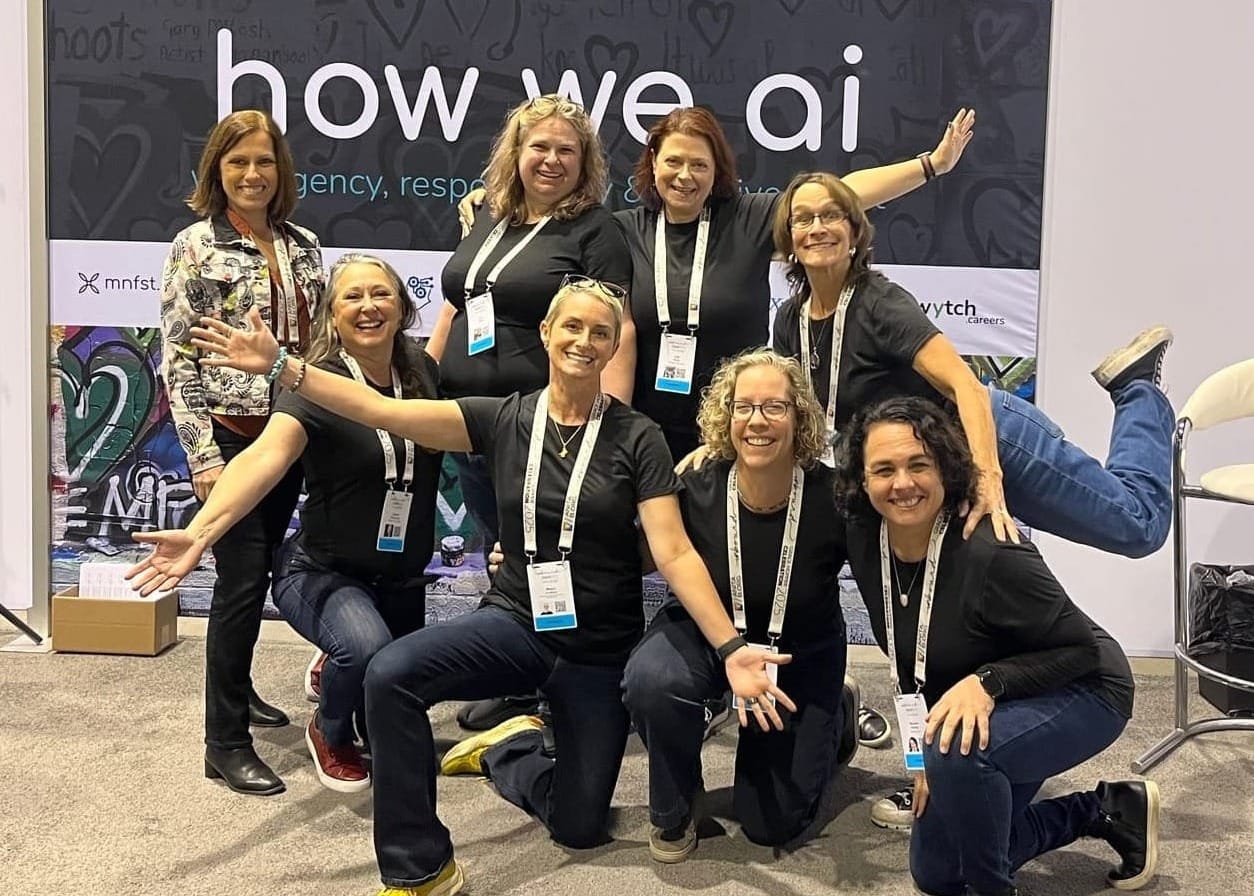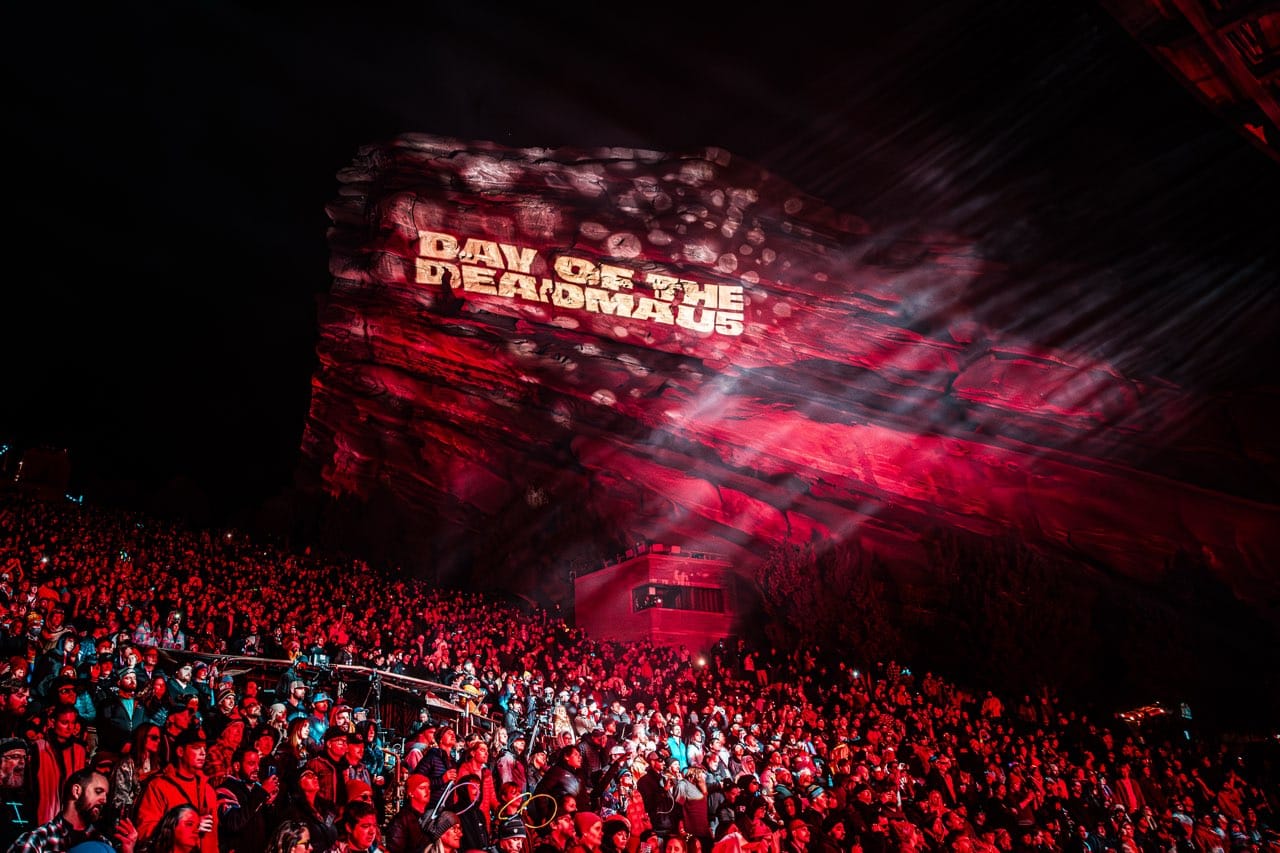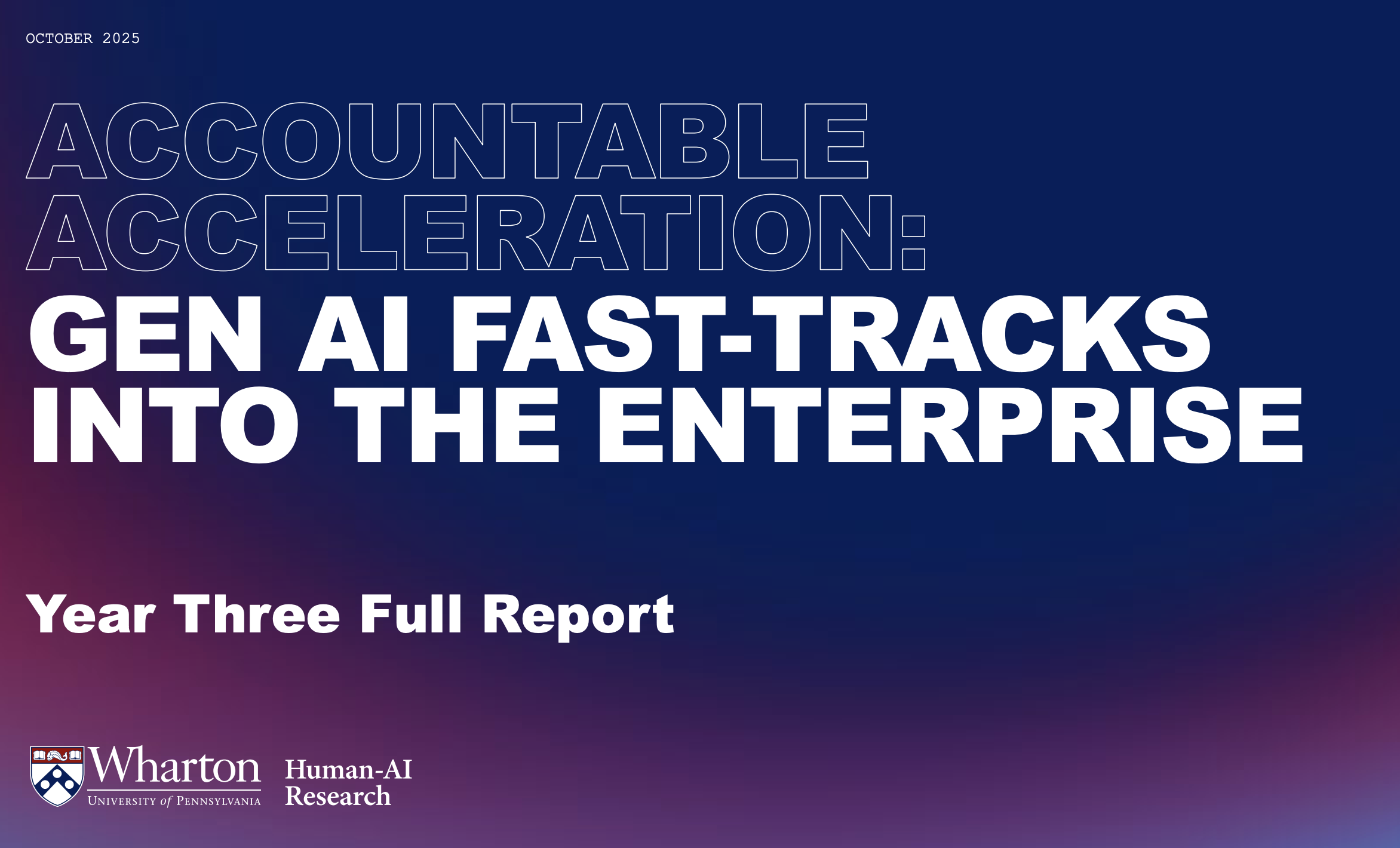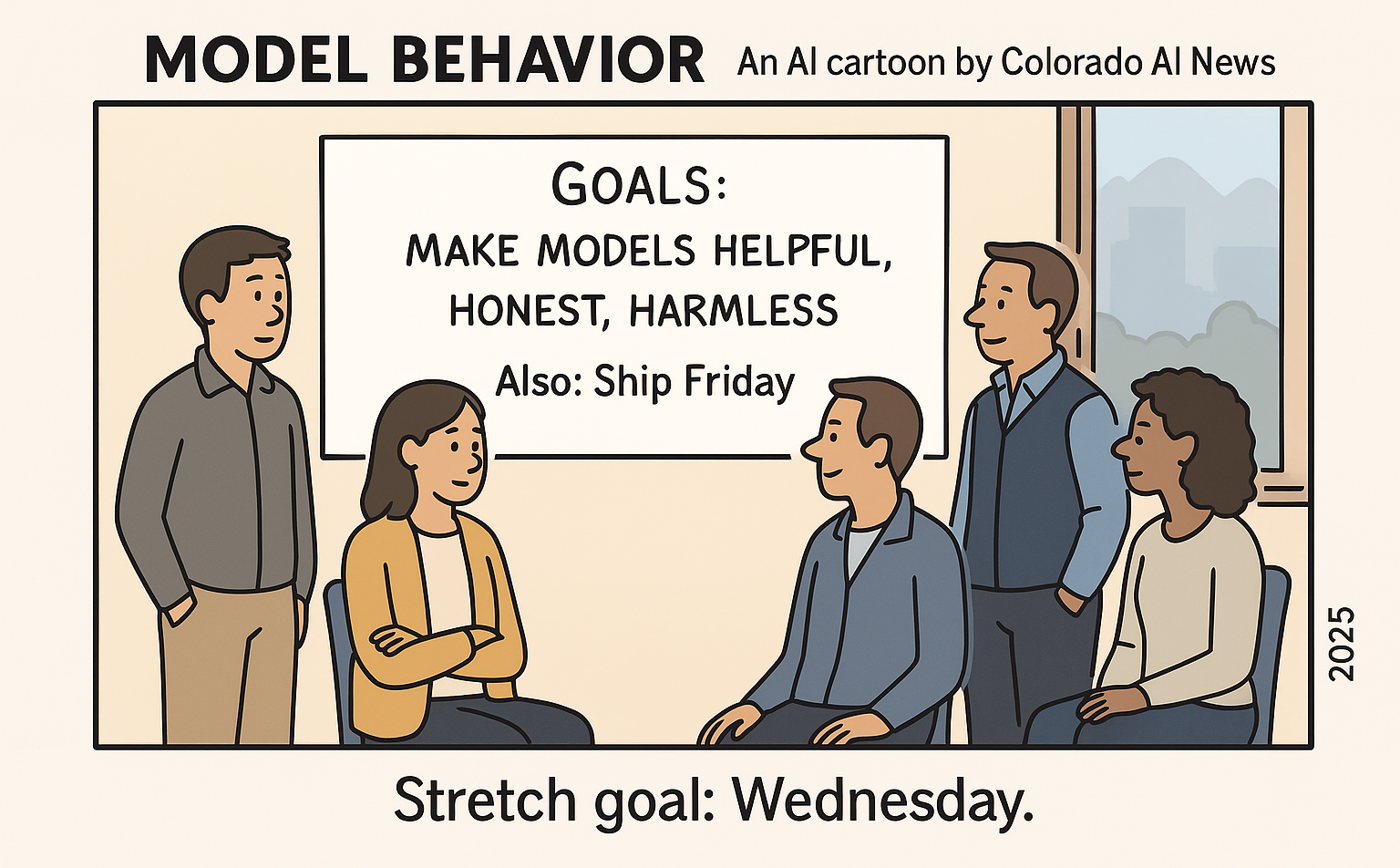At the Grace Hopper Celebration 2025 in Chicago - the world's largest gathering of women in technology - over 13,500 women moved through a convention center filled with company booths, career opportunities, and the relentless hum of professional networking. But at one booth, something different was happening.
Women walked in and were met with an invitation to reflect. They picked up markers and wrote their truths on a graffiti wall.
”How do I use AI instead of it using me?” one woman wrote, her handwriting filling the space with remarkable honesty. Another wrote, “We are in the AI ‘gold rush’ and we still have so much to learn about its impact and limitations.”
This wasn't a product pitch. It wasn't a recruitment drive. It was a conversation.
The Grace Hopper Celebration, hosted by AnitaB.org, was created to honor the legacy of computing pioneer Grace Hopper and to amplify the research, career growth, and impact of women in tech. This year's theme, "Unbound," challenged participants to break free from constraints, structural limitations, societal expectations, and internal doubts that have long defined women's professional narratives.
From Tools to Truth
Women in AI Labs, a project of Women in AI Colorado, co-created a booth in partnership with Manifest AI, offering a journey, not through features and functions, but through human experience. Manifest AI, founded by designers and technologists Ryan Martens and John Kembel, helps people wield the power of AI with agency, responsibility, and creative intent, focusing on discernment and human-centered practices rather than productivity hacks.
The first station at the booth was a heat map where women placed stickers on the AI tools they were already using. The map revealed something important: AI wasn't just for knowledge work, as it displayed creative work, personal work, and tools ranging from foundational to advanced.

As the stickers accumulated, the collective landscape became visible. "We think the most important thing is to invite AI deeply into your work and into your life - but to do so carefully," said John. Women also wrote what was missing: "I wish there was a tool for..." was a common refrain.The landscape became visible, collaborative, and owned by the community that was creating it. Women could see they weren't alone in their exploration.
At the next station came use cases and the practices corner: What are people actually using AI for? We were not just curious about the productivity wins that dominate headlines, but the personal applications, such as working through difficult conversations, organizing thoughts by role instead of project, and creating synthetic mentors for skills you're trying to learn. Women saw examples of how others were using AI for "the next right step.”
And then came the pivot: Drop the tech. Tell us how you really feel.
The graffiti corner became a confessional, a manifesto, a processing space. A woman who began with "how to use AI instead of it using me?" continued her thought in real time, working through her curiosity on the wall itself:
Our world has been changed by the introduction of AI and we are all now faced with a choice. We can either ignore AI and resist its implementation/integration in our lives + work OR we can embrace its enhancing power and decide for ourselves where it fits into our personal and professional paths.
Another woman wrote a full call to action:
Knowledge is power, and learning about/how to use AI tools will position you far above and ahead of those who choose to avoid doing so. Education, business, and communication are forever changed, and the faster we learn about AI tools, the better we can decide which to use and which ones not to use.
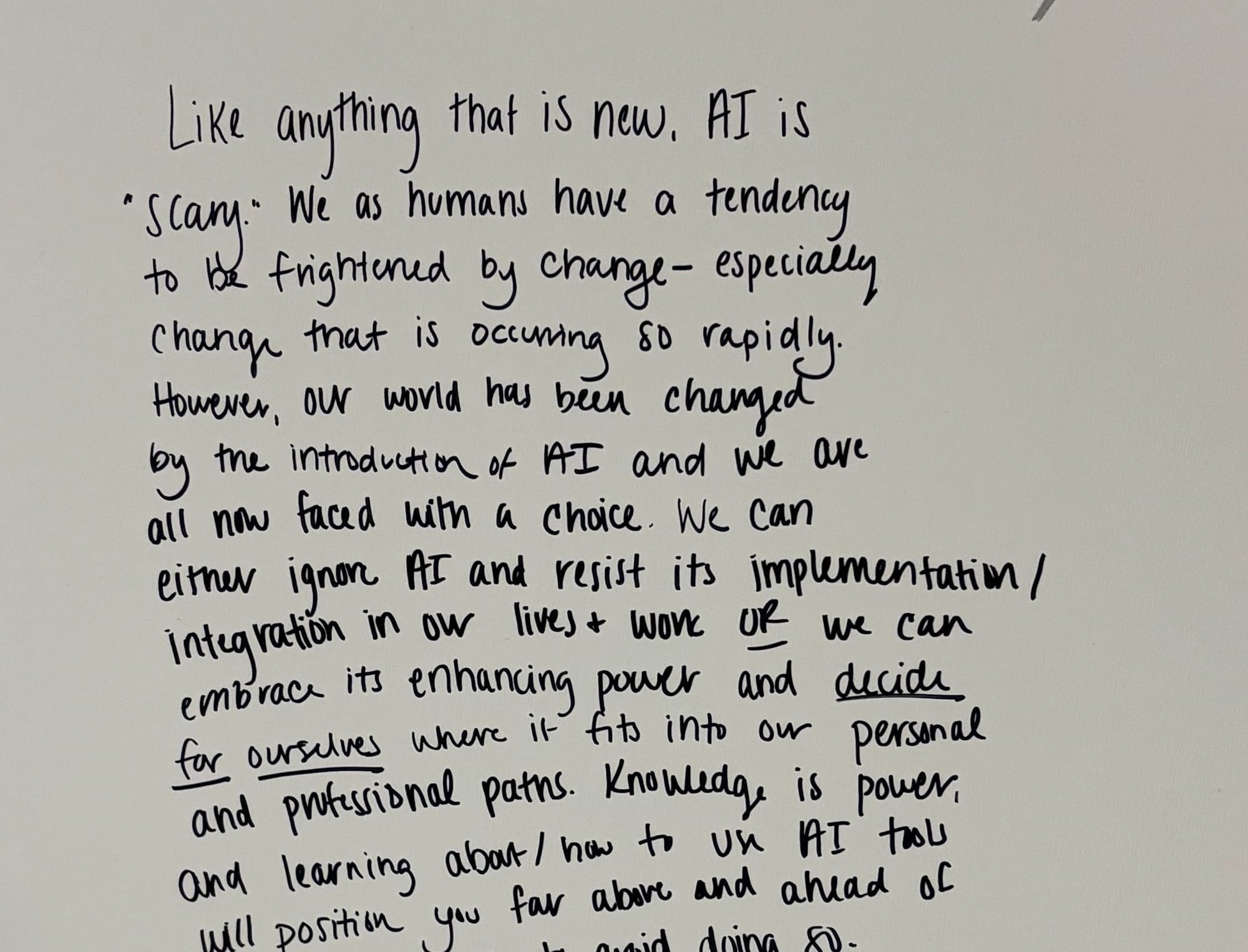
We witnessed in real time women moving from fear to agency. Exploring their wonder and finding their power.
Weaving Past, Present, and Future
After the personal graffiti came the most important part of the experience: visualizing your life’s journey on a large gallery wall. “Everything else is just preparing you to go deeper,” John shared. The visual was striking: strings crisscrossing the space, connecting cards to cards, creating what John called "a museum piece." But the methodology was even more striking. As he explained:
The idea is to set creative intent for your life empowered by AI. It helps to understand where have you come from and where you’re headed. We're all here in Chicago in this moment. We've all come from somewhere, but our strings intersect no matter where each of us came from.
But before the women fastened their strings, they were asked to sit with three questions and write their answers on cards:
Card 1 (Past): What do you need to draw on from your past? "We think this is an act of weaving and integration," John explained. He shared his own threads: "My grandpa didn't finish high school, but he was a maker. My dad said work for yourself. Those are threads I have carried for my whole life. And there are threads I have to cut. You have your threads too."
Card 2 (Present): What threads can you draw now from your current experience that would help you get there? And what threads or stories do you think you need to cut now?
Card 3 (Future): Where do you see yourself heading? "If AI wasn't just a tool disrupting, if AI was an empowerment, something that empowered you to manifest, how would you envision or shape your life?"
Women also were invited to add a selfie to the installation with an instant camera. "Take a photo, if you're comfortable, and put it out there too. Visualizing collective intent is what we're going for here," John explained.
John had prototyped this process with his oldest daughter over Zoom. "It was such an illuminating experience for me," he said. "She's a writer and musician, and she’s using AI to manage the mundane so she can stay focused creatively."
The strings became a web of human stories. A tangible reminder that before we talk about where AI fits, we need to know who we are and what we value.

What We Witnessed: An Exhale
The emotional shift was palpable. Many of the women were in their twenties, recent college graduates, carrying resumes and looking for work. They moved through the convention center with the performance energy that job-seeking requires: polished, strategic, always "on."
At our booth, some of them cried.
"They couldn't believe we were asking them to take a breath and be reflective," a member of our team observed. The pressure to perform, to have all the answers, to already be proficient with tools they'd barely had time to understand, was overwhelming.
One woman said it was "a breath of fresh air" to be met with questions instead of answers, with space instead of sales pitches, with invitation instead of instruction.
The Methodology: Connection + Collaboration + Co-Creation
What emerged from the Grace Hopper Celebration wasn't just a successful booth experience, it was a methodology for transformation.
The sequence matters:
- Welcome - Create a visual invitation that signals "this is different"
- Ground in reality - Show the landscape of tools, make the invisible visible
- Expand possibility - Share use cases that spark imagination
- Drop the tech - Create space for honest emotion and reflection
- Connect to humanness - Use the string installation to remember who you are
- Extend the invitation - Offer a container for ongoing community
This is the framework for Women in AI Labs, which was born from Women in AI Colorado and is now expanding to other cities and states. It's not a training program or a bootcamp. It's a learning laboratory, a real space where women gather face-to-face, open their laptops, and learn AI their way, supported by coaches and each other.
The three C's guide everything: Connection, Collaboration, Co-creation.
First, you connect as humans. Then you can collaborate on learning. Then you co-create new possibilities together.
The Response: "I Want to Start One in My City"
The most powerful moment wasn't anything we said. It was what women spontaneously offered.
"I want to start one in my city."
Again and again, women asked how they could bring Women in AI Labs to their communities. They understood immediately that this wasn't about buying a product or attending a webinar. It was about building the kind of spaces where women can claim their agency in the age of AI.
Because that's the real work. The tools are only the start. What’s important is giving women permission to be afraid, to be curious, to make mistakes, to ask questions, to decide for themselves where AI fits into their personal and professional paths.
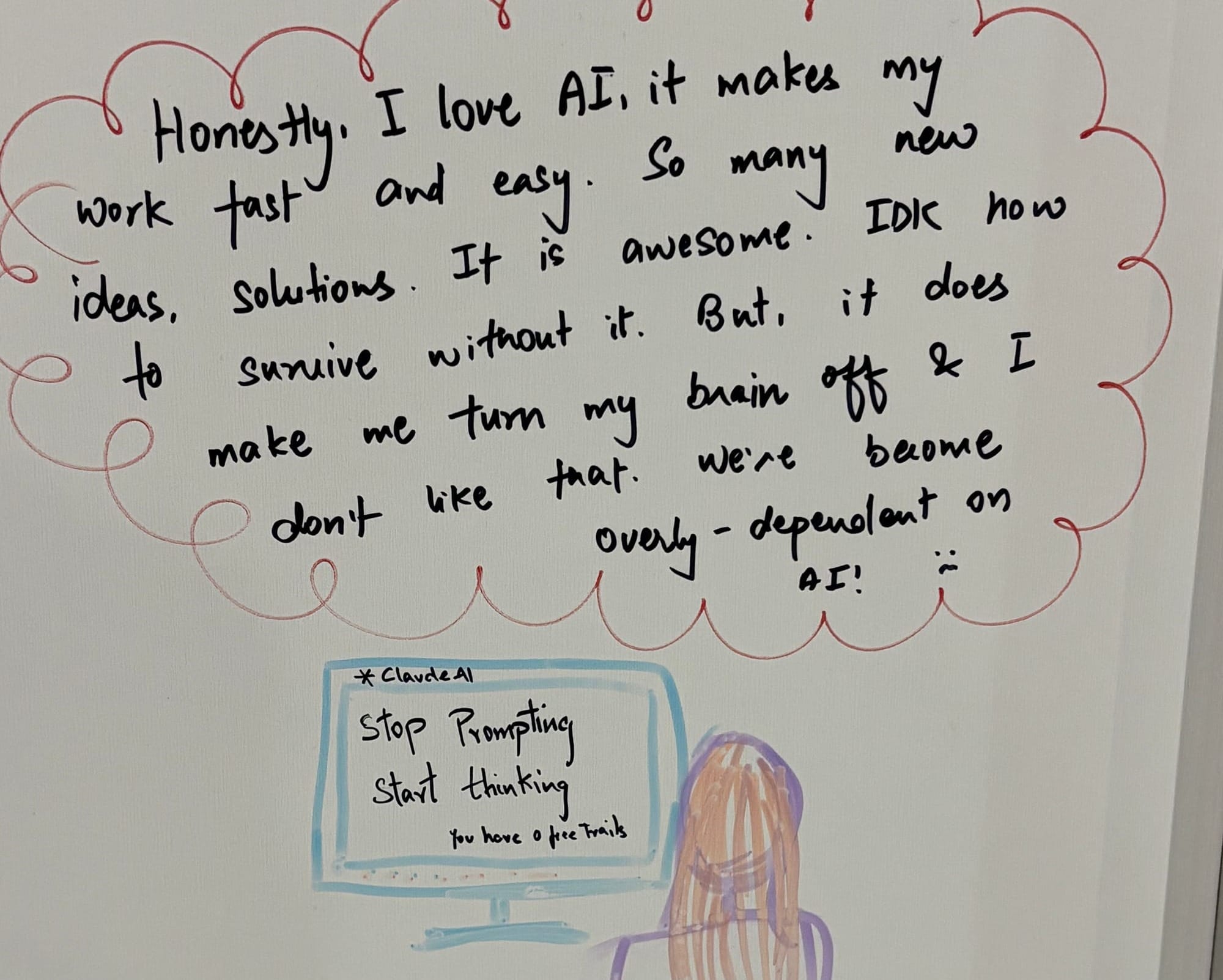
Why It Matters: The Choice Before Us
What was shared on the graffiti wall got it exactly right: We're all faced with a choice.
We can resist, ignore, and fall behind. Or we can embrace AI's enhancing power and decide for ourselves where it fits. Not where the hype tells us it should fit. Not where our employers demand it fit. Where we decide it fits.
That decision requires space. Community. Reflection. Connection.
It requires us to remember that we're not just workers to be made more efficient or tasks to be optimized. We're humans with histories, values, dreams, and the creative capacity to shape the tools we use rather than being shaped by them.
At Grace Hopper, we witnessed more than 1,000 women move through that recognition in real time.
They picked up markers and wrote their truth.
They strung cards together, making their stories visible.
They asked to bring this experience home.
What's Next: Expanding Women in AI Labs
Women in AI Labs is actively expanding beyond Boulder and Denver. We're looking for women who want to create learning laboratories in their cities and states far from Colorado, spaces where connection, collaboration, and co-creation happen face-to-face.
If you attended Grace Hopper and connected with our team, we'll be following up with you. If you're reading this and feel the pull to create this kind of space in your community, reach out.
The voices of women deserve to be heard, not just in how we respond to AI, but in how we shape its integration into our lives and work.
The graffiti wall will keep growing. The strings will keep connecting. The conversations will continue.
Because this is how we AI: with agency, responsibility, and creative intent.
The Grace Hopper booth was created in partnership with Manifest AI, alongside Women in AI Labs founding partners, including Hyperadative, Wisary, Crys Black Consulting, Swytch.careers, The Welcome Elephant, Eleutheria, medXreports.com, and Lovable.



